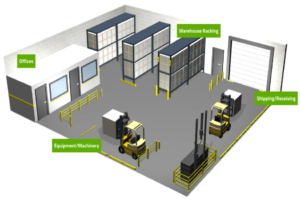Effective product quality assurance entails more than simply hiring the right people for a job. It requires a commitment to quality at every level of the production process — beginning with the health of your manufacturing facility and the condition of your equipment therein.

1. Delineate a Clear and Replicable Production Process
The best way to do this is through a clear documentation process. If you keep a record of exactly what procedure works and outline the steps involved, you'll be able to define a production process that will promote consistent results. Furthermore, a clearly defined process will be easier to communicate to new hires, so product quality won't suffer in the event of employee turnover.
2. Clean Your Machines Regularly
It's a simple idea that's often not followed up in practice. One of the best ways to ensure product quality is to keep your machines in top shape — a habit that involves conducting frequent cleanings as a part of your routine maintenance. Raw materials leave residue on the inside of machines that can affect the quality of your finished product and create small inconsistencies. The longer you let a machine run without cleaning it, the more likely it is that dust and product residue is abrading your equipment, hurting both product quality and machine longevity. So how often is "frequent"? Believe it or not, to keep your machines healthy and your products consistent you need to clean your machines around once a shift (for a standard 8-hour shift). That might mean using an air hose to quickly clear out internal debris before finishing a large production cycle or starting a new project. Incorporate this cleaning cadence into your overall production process to promote uniform compliance. It's also a good practice to schedule more thorough cleanings at longer intervals or after an especially taxing project.
3. Install a Variable Frequency Drive (VFD)
A VFD controls the frequency and voltage supplied to an electric motor. That means if you're working on a project that doesn't require running the motor at full speed, you can adjust the electrical output to save on energy costs. Adjusting motors to operate at the most efficient speed for a given application will also decrease the likelihood of production mistakes and improve your equipment's overall lifespan.
4. Practice Total Productive Maintenance (TPM)
TPM refers to the concept of training a specific operator and technical expert to control day-to-day machine functioning and identify possible equipment faults. It's a simple form of specialization whereby specific employees are nurtured via training and consistent hands-on experience. Since these individuals are tasked with the day-to-day maintenance and operation of a single machine, they gain an expert understanding of how that machine functions — and thus become skillful at locating potential problems before they occur. This expertise will prevent downtime due to equipment failure, increase overall productivity and ensure consistent product quality.
5. Invest in Preventative Maintenance
The best way to guarantee that your equipment is functioning with the highest degree of accuracy and efficiency is to conduct regular equipment checkups. Fixing or protecting worn machine components will cost you less in the long run by preventing larger mechanical failures and reducing the need for total machine replacement down the road.




